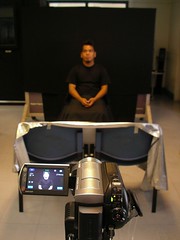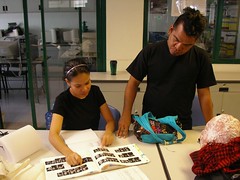The other common approach to sign language recognition is Vision-based. Video footage of subjects signing are fed into the computer either in real-time or as a video file recorded earlier.
Advantages
- Mainstream hardware. Video cameras are easier to obtain, configure and control than the CyberGlove.
- Closer to natural. Signers don't wear any special equipment that may impede in their signing.
- Easier to productionize. No (extra) special equipment needed in applications.
Disadvantages
- Sensitive to lighting conditions, and background noise.
- Occlusion is a problem. In certain positions, the hands and arms will obscure the face or the other hand/arm.
- Not as accurate as Direct Measure and it depends on the camera resolution.
If it wasn't obvious already, I'll be going with the Vision-based approach.

